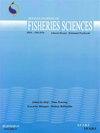基于大型无脊椎动物群落指数的卡拉伊河和贾伊鲁德河理化参数对水生态质量的影响
IF 0.6
4区 农林科学
Q3 FISHERIES
引用次数: 2
摘要
这是在伊朗计算的用于评估Jajrood和Karaj受保护河流水质的多指标数量最多的第一项研究。考虑到这些河流提供了德黑兰大部分的饮用水,本研究旨在根据这些指数中合适的生物指数确定这些河流的生态质量。物理化学和宏观无脊椎动物样品是用Surber采样器连续3年在19个站点进行3次重复采集的。在Jajrood河和Karaj河分别鉴定了22科、6667种大型无脊椎动物和24科、13246种大型无脊椎动物。夏季是大型无脊椎动物丰度和多样性最高的季节。CCA结果表明,理化参数TSS、EC、pH和BOD对大型无脊椎动物的分布影响最大。在16个生物指数中,Karaj河的FBI指数和Jajrood河的BMWP/ASPT指数是评价水质最可靠的指标。结果表明,点源污染(果园、餐馆和村庄)和非点源污染(旅游活动和游憩区)对两河生态系统的负面影响最大。水质评价结果揭示了人类活动对水体生态质量的影响;因此,有必要加强对污染源的控制和管理,以改善这两条河流的水质。本文章由计算机程序翻译,如有差异,请以英文原文为准。
Assessment the effects of physiochemical parameters on water ecological quality using indices based on macro-invertebrates communities in the Karaj and Jajrood Rivers
This is the first study with the greatest number of multimetric indices calculated in Iran to assess water quality at Jajrood and Karaj protected rivers. Given the point that these rivers supply a large portion of Tehran's drinking water, the present study aims at determining ecological quality of these rivers based on a suitable biotic index among these indices. Physicochemical and macro-invertebrate samples were collected with three replications during three consecutive years from 19 stations with a Surber sampler. In the Jajrood River, macroinvertebrates with 6667 abundance belong to 22 families and in the Karaj River, macro-invertebrates with 13,246 abundance belong to 24 families have been identified. The most appropriate time for sampling is in summer because of the existence maximum abundance and diversity of macroinvertebrates. The results of CCA have been shown physicochemical parameters TSS, EC, pH, and BOD have the most effect on the distribution of macroinvertebrates. Among the 16 biotic indices, the FBI index in Karaj River and the BMWP/ASPT index in the Jajrood River are the most reliable indices for assessing the water quality. The results showed that point pollution sources (orchards, restaurants and villages) and nonpoint sources (tourism activities and recreational area) have the most negative impact on the ecosystem of these two rivers. Results of water quality assessment have been shown the changes in ecological quality of water due to human activities; therefore, it is necessary to increase control and management of pollutant sources to improve the water quality of these two rivers.
求助全文
通过发布文献求助,成功后即可免费获取论文全文。
去求助
来源期刊

Iranian Journal of Fisheries Sciences
FISHERIES-
CiteScore
2.30
自引率
11.10%
发文量
0
审稿时长
3 months
期刊介绍:
1- Living various species (contains animals and vegetal species) in various aquatic ecosystems.
2- Health and diseases of aquatic species.
3- Determining the stocks and specific time and location for catching and reliable exploitation for sustainable development.
4- Methods of propagation and culture of high value aquatic resources.
5- Aquatic stock assessment and the methods of restocking the high value species and suggestion for rate, areas and the time for releasing fish and other aquatic organisms fries.
6- Pollutant agents and their effects to the environments of aquatic species.
7- Feed and feeding in aquatic organisms.
8- Fish processing and producing new products.
9- The economic and social aspects of fisheries.
 求助内容:
求助内容: 应助结果提醒方式:
应助结果提醒方式:


